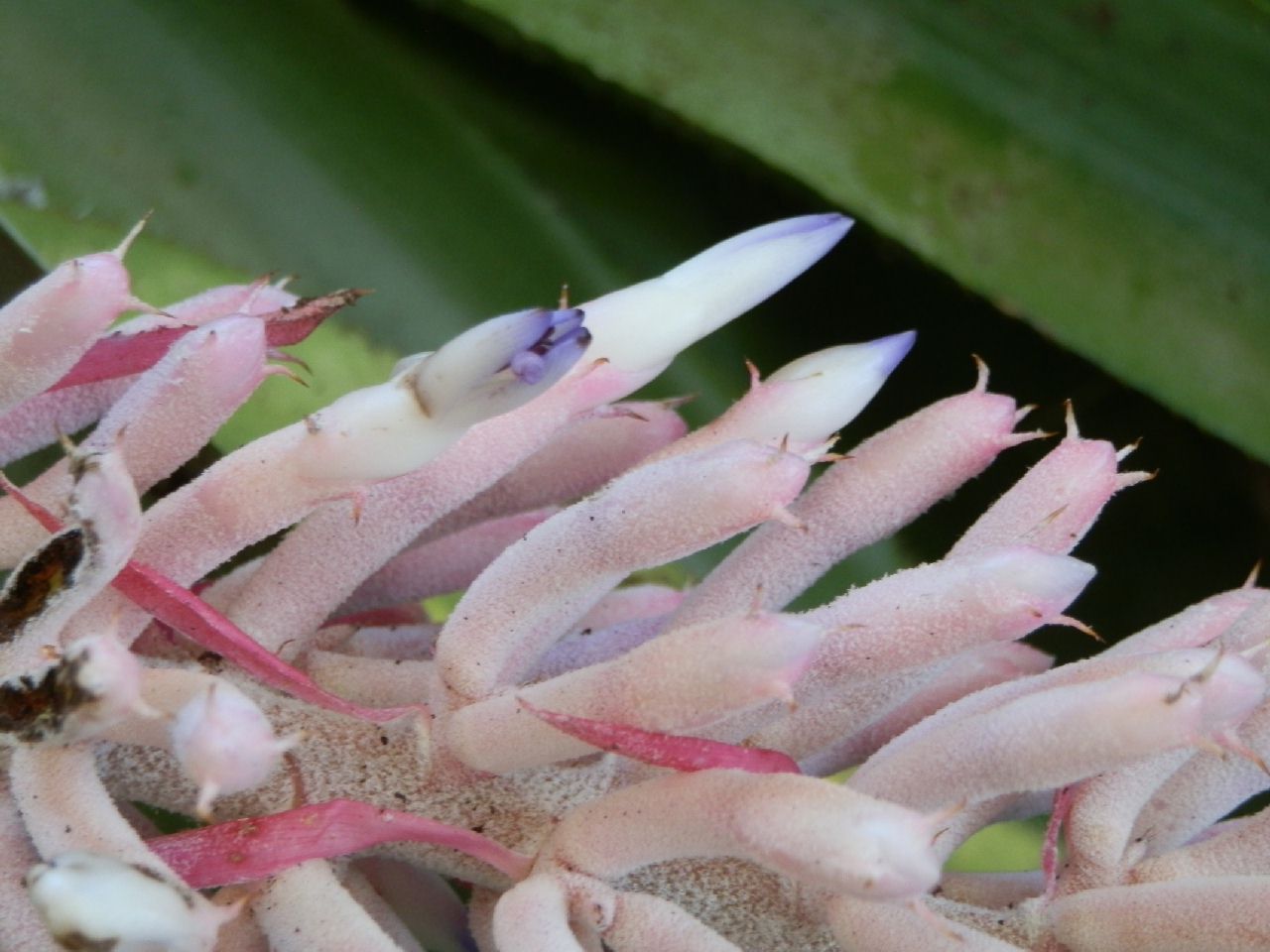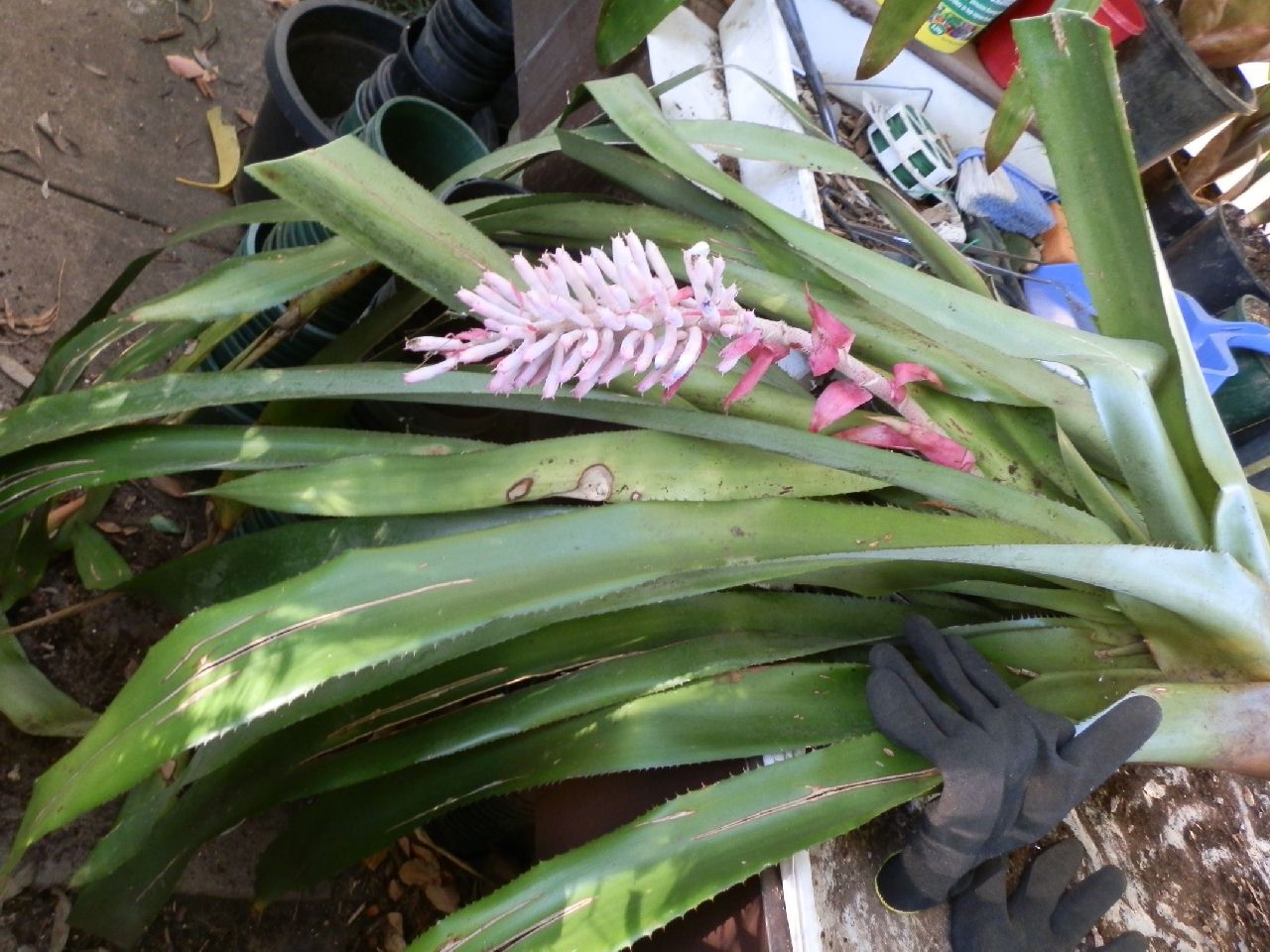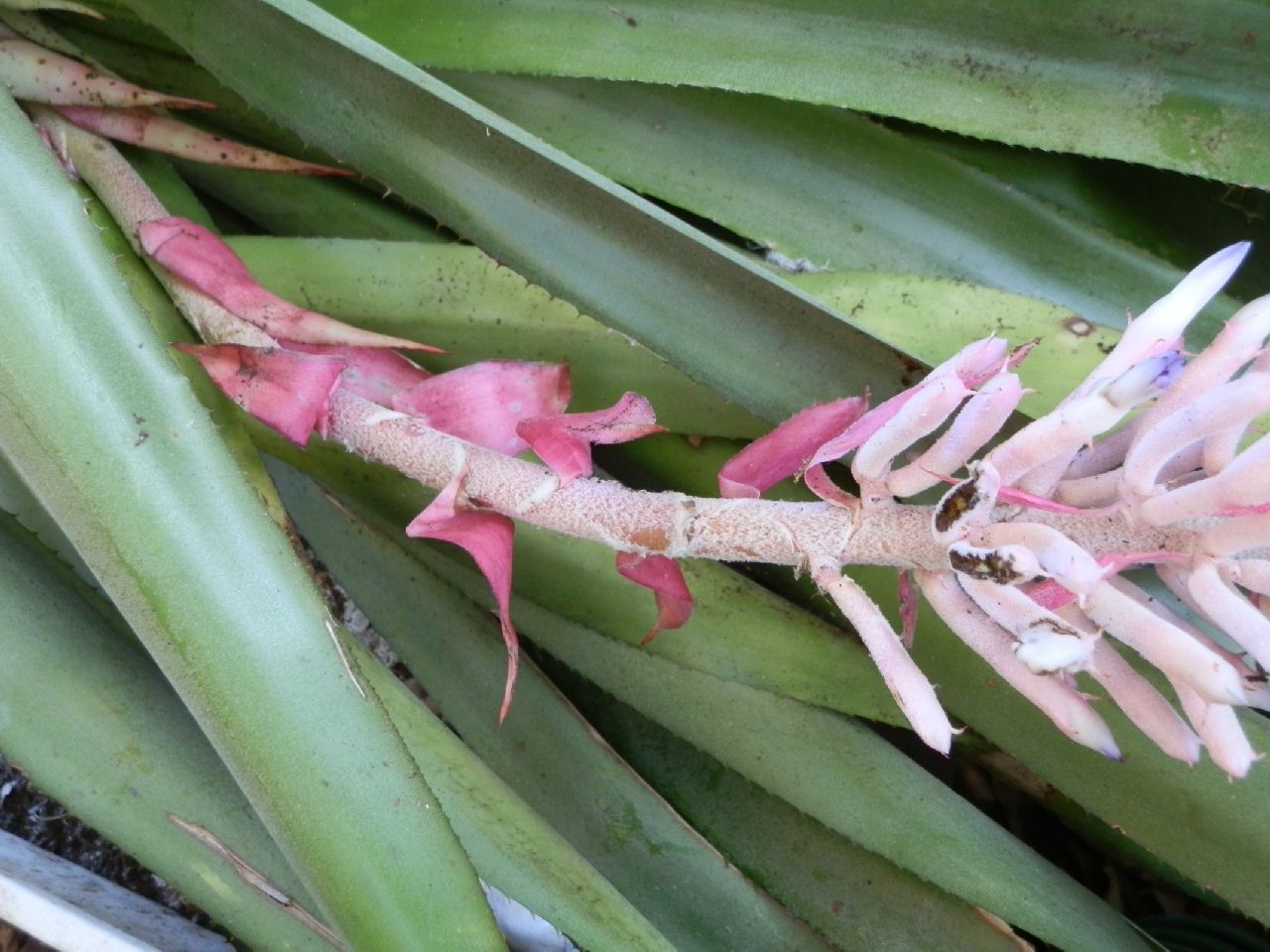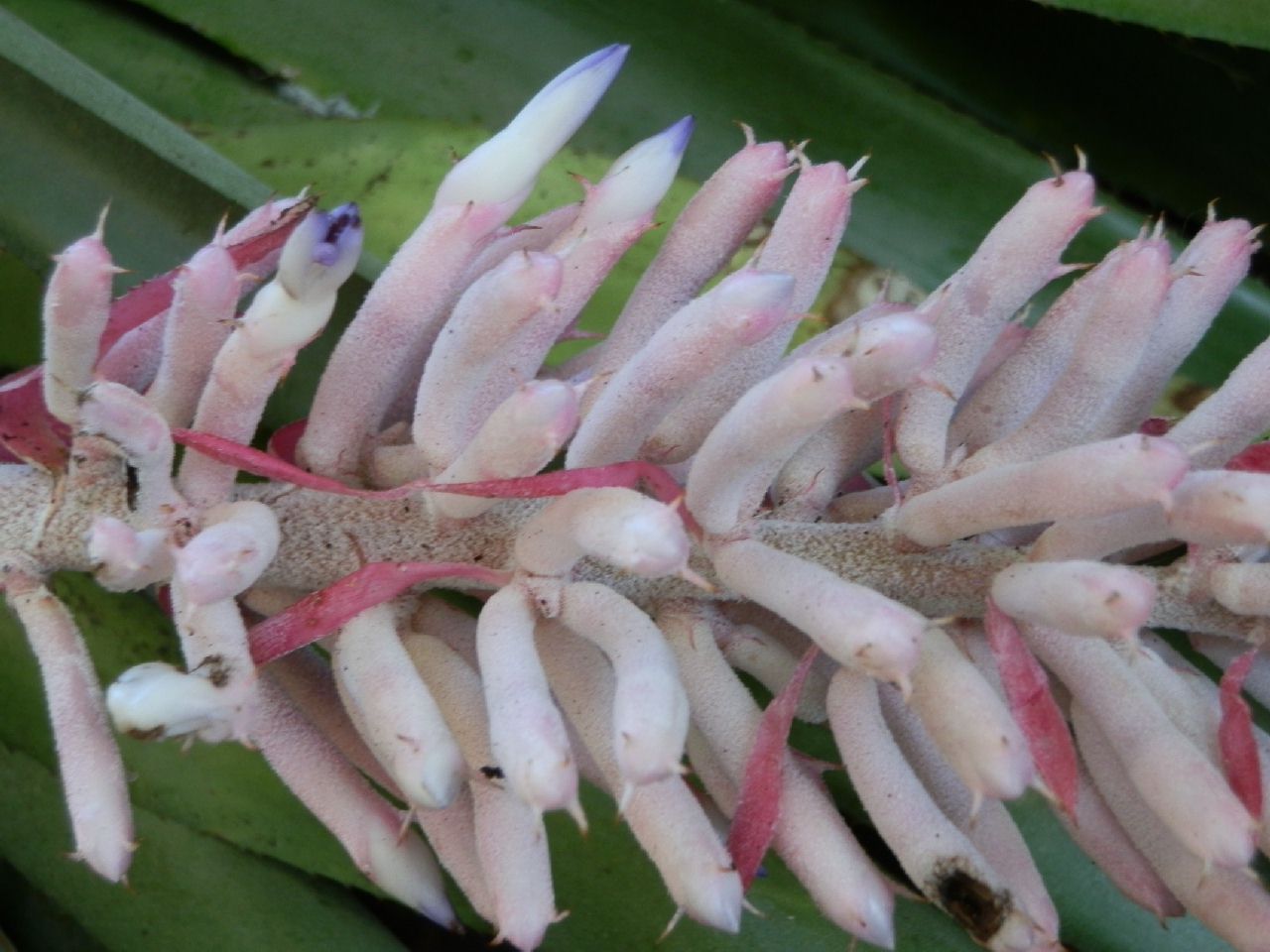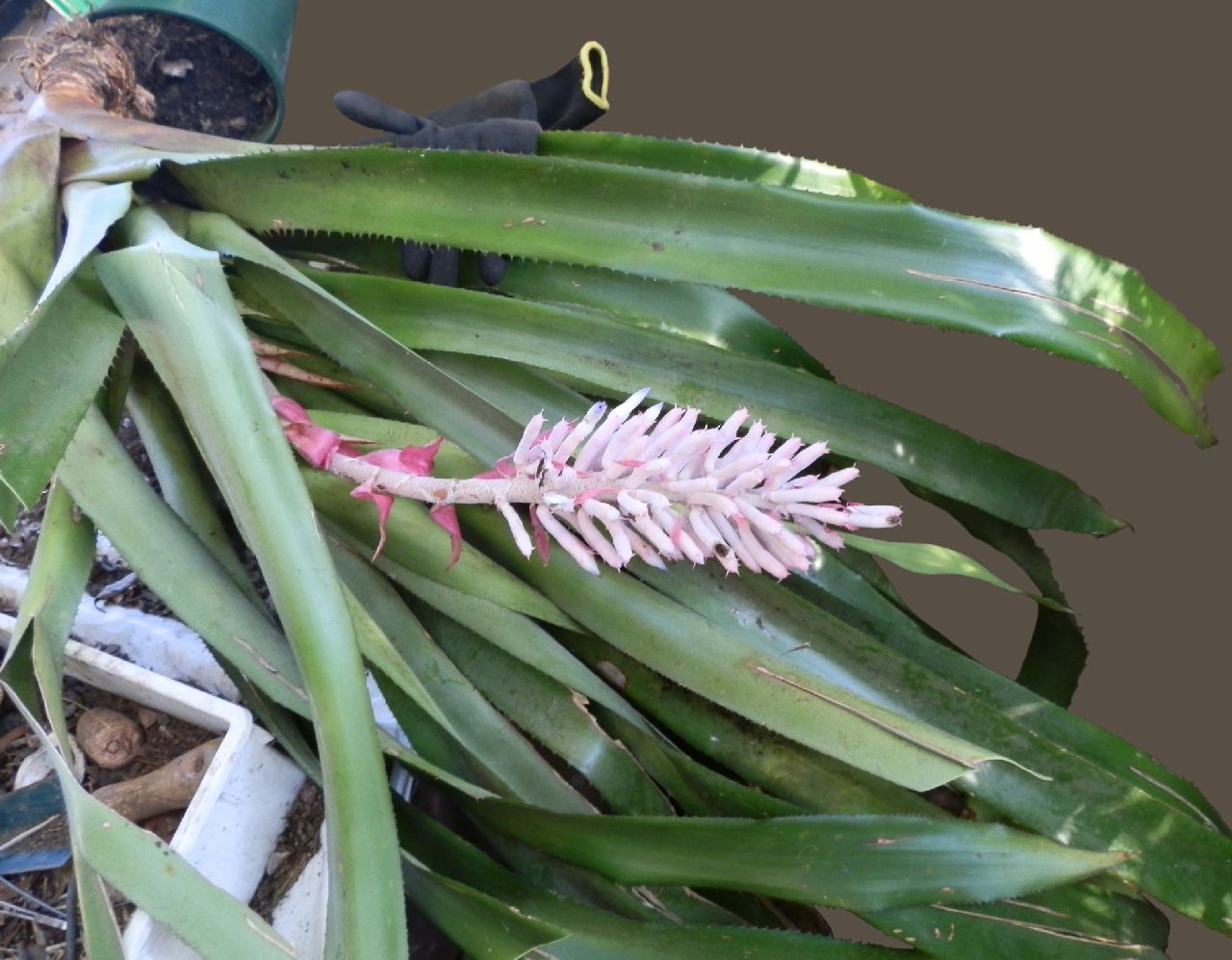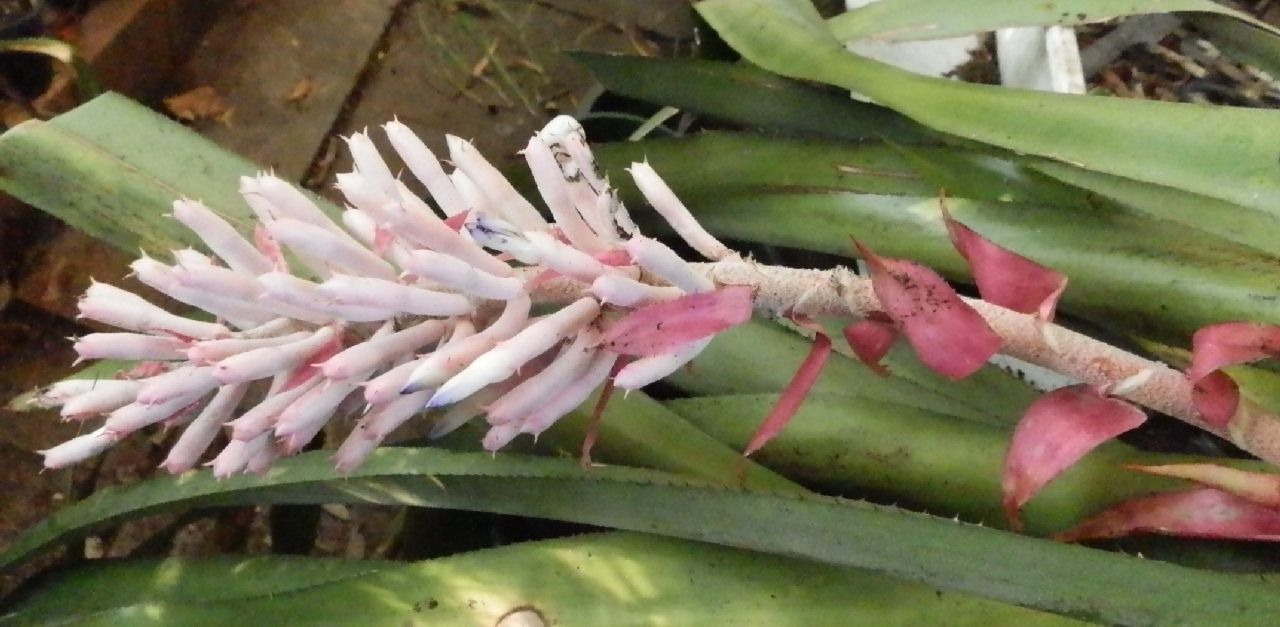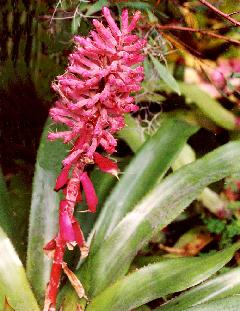
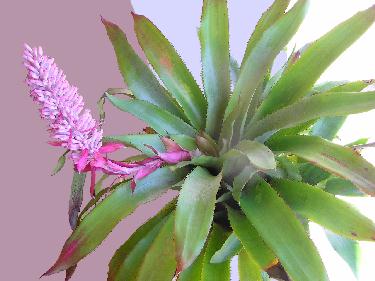
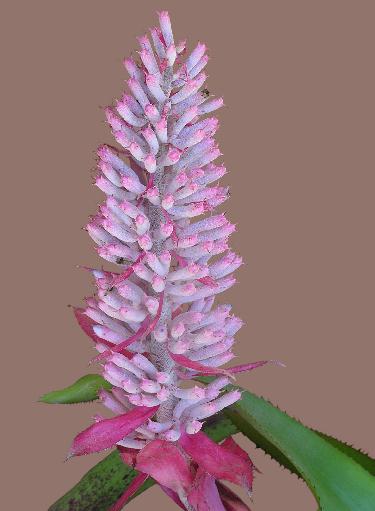

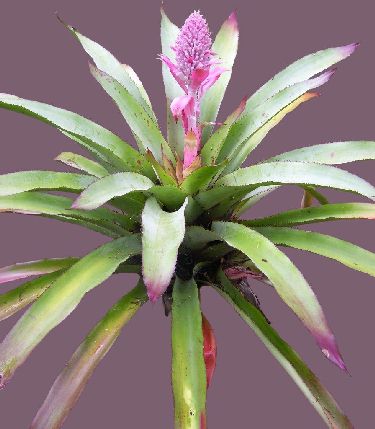
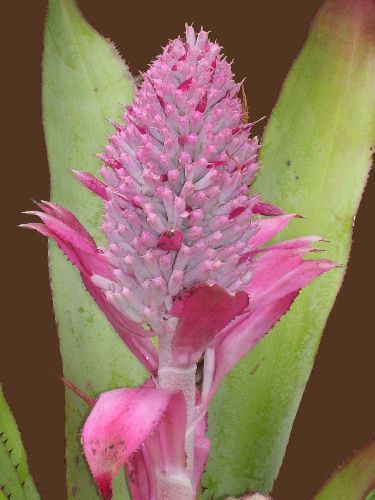
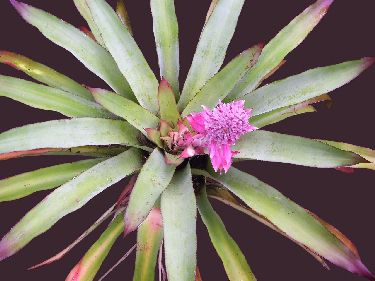
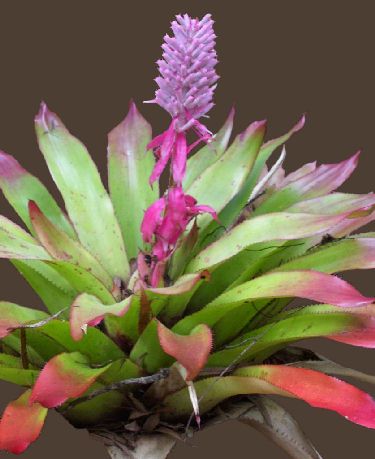
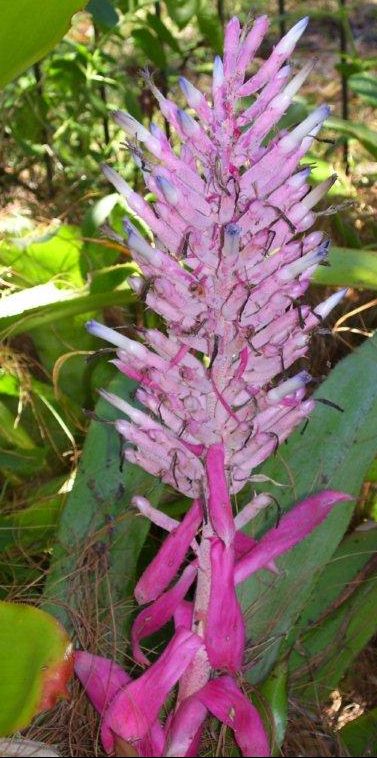

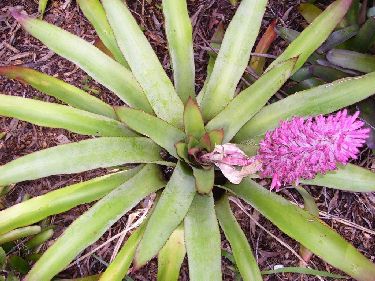
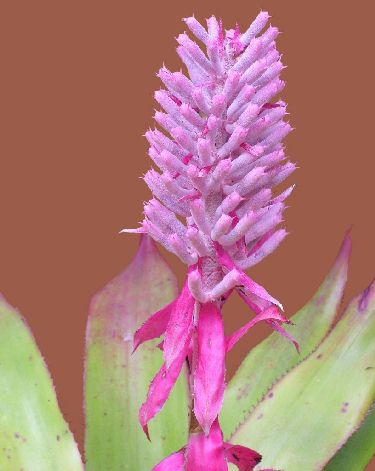

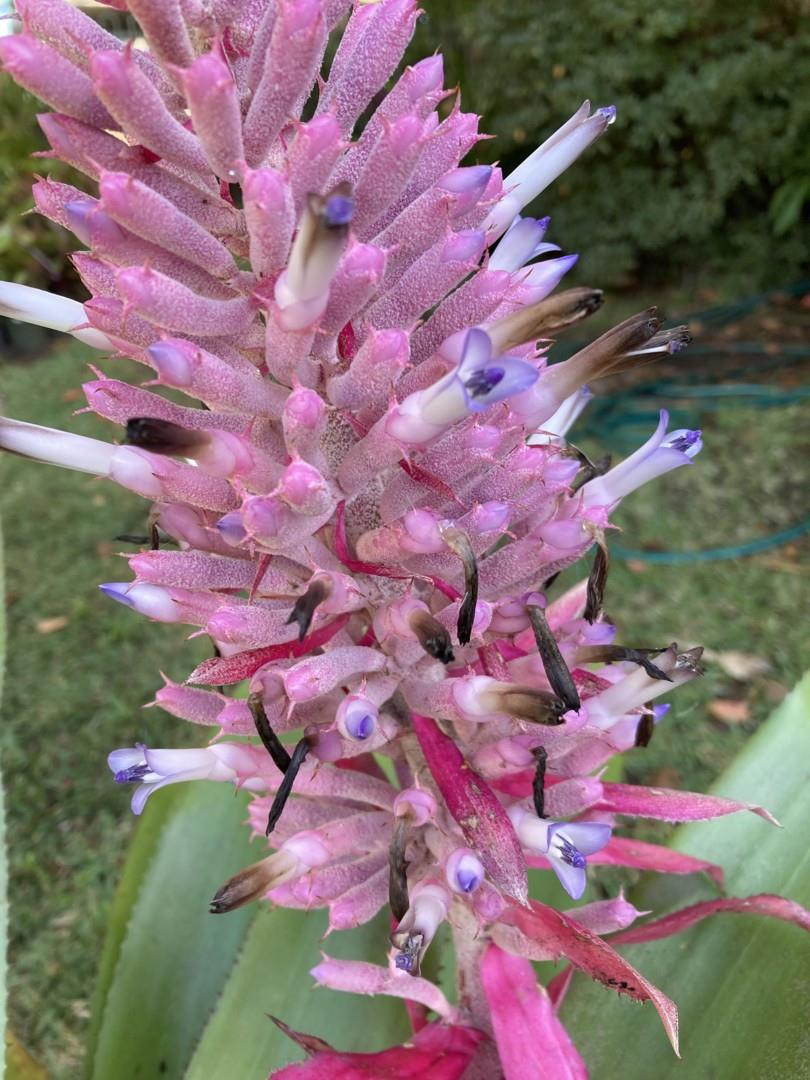
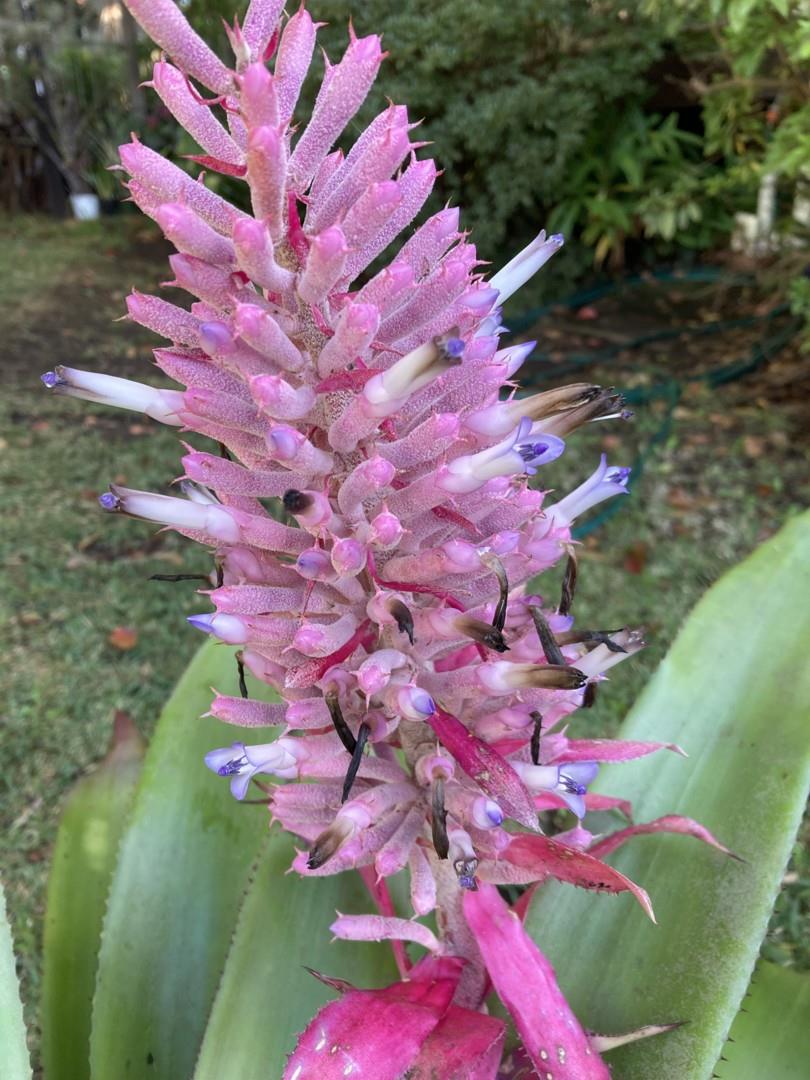
Plants grown in Australia with either Aechmea macrochlamys or Portea fosteriana or Streptocalyx poeppigii on the label are quite often sold as A. macrochlamys. A plant which closely resembles 'Macfoster' was imported into Australia from California in1982 as Ae. 'Purple Globe' has been dealt with by Derek Butcher, Harry Luther and Elton Leme and was considered to be an abnormal form of Ae. macrochlamys.
The plant we are now referring to as 'Macfoster' came to Pinegrove Nursery in1984 via Forest Drive Nursery as Streptocalyx poeppigii. Peter Tristram in turn had obtained his plant from Grace Goode. Now for a further twist because Grace must have been growing the ‘true’ Streptocalyx poeppigii, AS WELL, because Derek Butcher took its photo while visiting Grace in 1979. Therefore ‘Macfoster’ was either imported by Grace or someone else from presumably the USA as Streptocalyx poeppigii. There is also a possibility that Alvim Seidel was involved either with plants sent to the USA or direct to Australia. In his 1976 catalogue he was offering both Portea fosteriana and Streptocalyx poeppigii but not Aechmea macrochlamys. Now might be the time to mention that Streptocalyx poeppigii went to Aechmea beeriana and is now known as Aechmea vallerandii!
Back to Pinegrove Nursery where, at a later date, this plant had its name changed to Ae. macrochlamys by person unknown. In circa.1990 Peter Franklin of Raymond Terrace, received a plant from Pinegrove as Streptocalyx poeppigii. Peter could see something was amiss with the description in Smith & Downs Monograph and his plant, but he was never comfortable at all with it being suggested it was Ae. macrochlamys. He thought it worth a look at Ae. beeriana, but not a match there either. In 1993 Elton Leme published his book "Bromeliads in the Brazilian Wilderness", even though Peter had retained the name of S. poeppigii for ages, he saw a photo of Portea fosteriana on page 48 of Leme's book and felt this was his plant, then changed his label accordingly. Did others do the same ?
Over the years many discussions have been made regarding the taxonomic discrepancies in S&D of Ae. macrochlamys and P. fosteriana and our 'Macfoster' just doesn't fit comfortably within either description. To my mind there appears to be an overlap in the two descriptions to the plant we now refer to as 'Macfoster'. Ae. macrochlamys and P. fosteriana, were both collected in July 1939 by Mulford and Racine Foster in approximately the same area only 12 days apart. Foster’s herbarium specimen of P. fosteriana is also tagged P. silveirae Mez and does appear close to P. silveirae. Photos of this plant on FCBS.org for the species concerned do look different to 'Macfoster' although there are similarities to the photo by Carol Johnson, late of Pineapple place of Ae. macrochlamys. Could Florida be the source of this plant that found its way to Australia?
When one asks what separates Aechmea from Portea the general answer is that "Portea has pedicels a minimum of 5-6 mm long". The plant we had tagged as Ae. macrochlamys now 'Macfoster' has pedicels are 80 – 90% NIL with few to 5 mm which indicates a closer affinity to Aechmea than Portea.
A few differences we noted with 'Macfoster' to P. fosteriana in S&D are:
1. Macfoster's scape is 17 mm not 10 mm thick.
2. Inflorescence not tripinnate.
3. Upper primary bracts half the length of the branch -- not barely exceeds the base of the branch.
4. Floral bracts minute, almost absent -- not shorter than the pedicel (5 - 6 mm)
5. Branches spreading, flowers mostly sessile -- not 5 - 6 mm pedicel.
In Darwin 2011, I discussed an anomaly we noted within the floral structure of 'Macfoster' with Harry Luther. I had noticed an absence of nectar scales at the base of the petals, whereas the nectar scales in flowers Don Beard was checking were quite visible. We checked more flowers to find this wasn't just an irregularity to the one flower. Harry had observed this irregularity also, but could offer no definitive answer.
There are too many discrepancies, too many people agree that this particular plant doesn't fit the descriptions, therefore we feel it is best resolved by giving it a cultivar name by joining the two together as Ae. 'Macfoster'.
Thanks to: Don Beard, Derek Butcher and Peter Franklin for their assistance.

